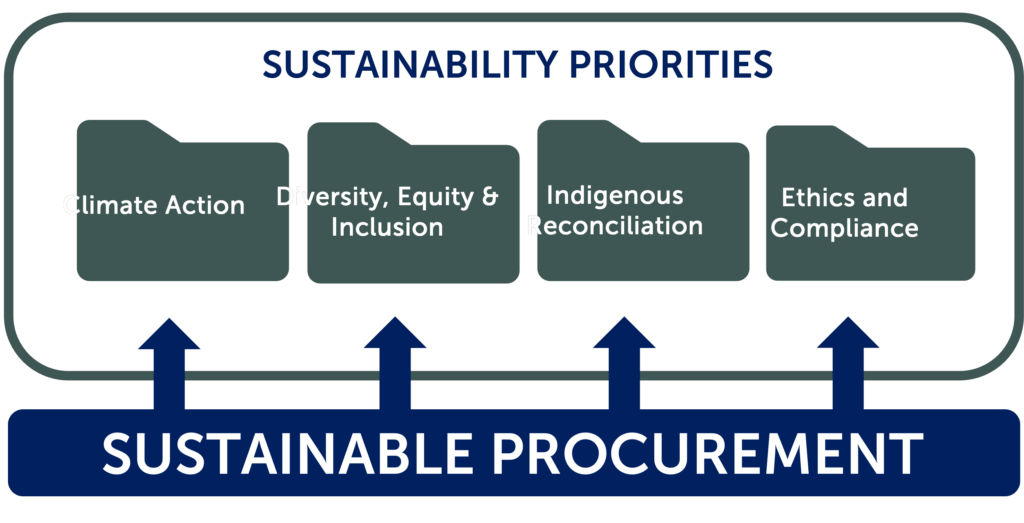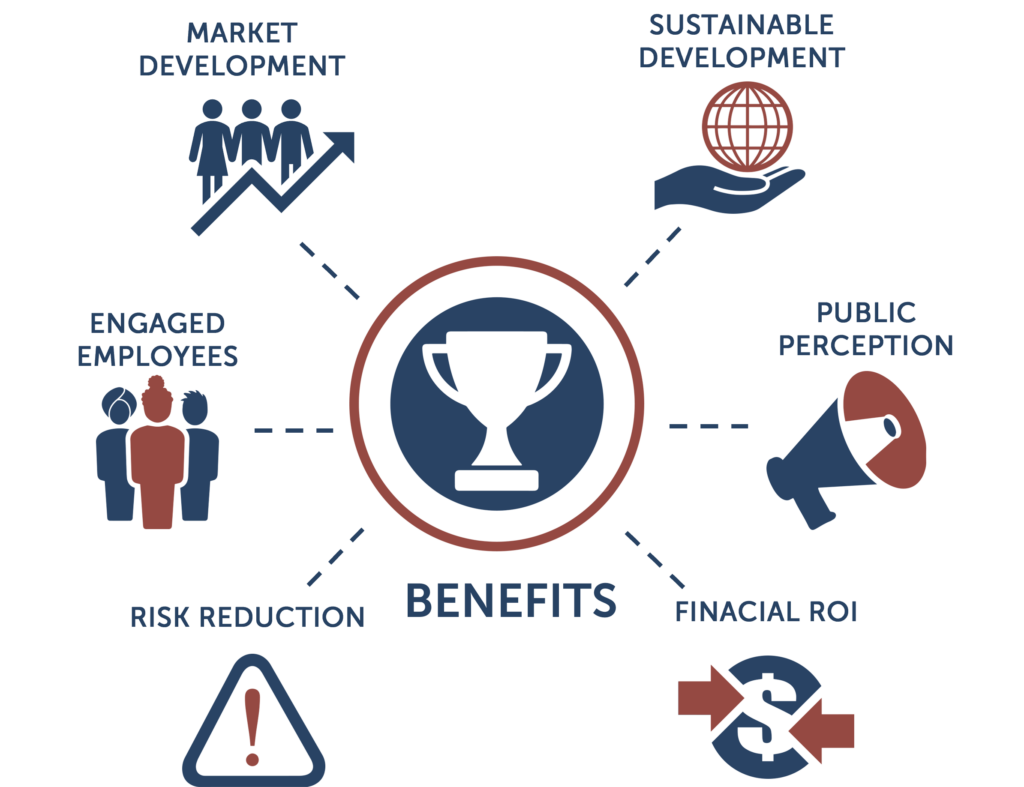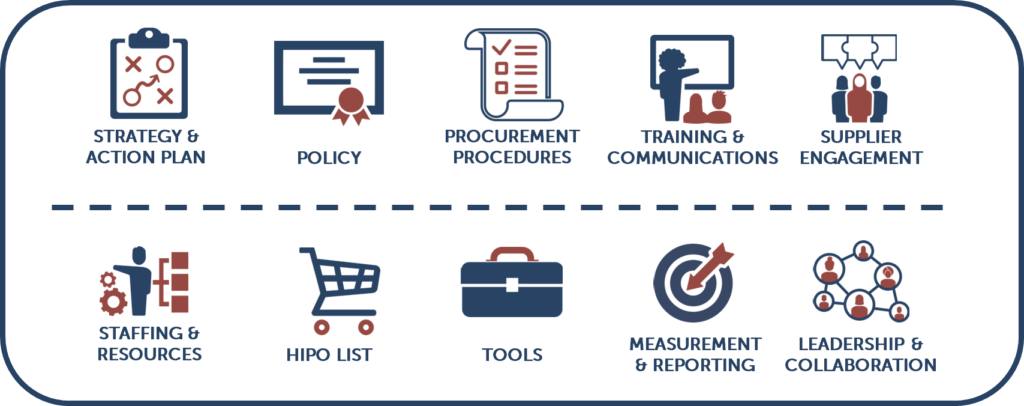Meet Sustainable Procurement: The New Catalyst of ESG Performance
Procurement is a powerful tool to improve an organization’s ESG performance. Tim Reeve from Reeve Consulting gives advices on how organizations can implement ten elements of an impactful sustainable procurement program to meet ESG targets and improve operational efficiency.
Fires, floods, droughts and storms have impacted most of the world and reiterated the call for immediate action to minimize greenhouse gas emissions. Concurrently, there has been a growing awareness that to achieve a prosperous society for all, our economy needs to be more inclusive and equitable. Organizations are expected to focus attention on achieving key environmental, social and governance (ESG) goals.

Procurement: It’s not what it used to be
One of the most powerful tools to support an organization’s ESG journey is sustainable procurement, and a subtle evolution of the standard criteria used when sourcing goods and services. This shift from traditional procurement to sustainable procurement unlocks significant positive environmental and social impacts for every organization; often exceeding the greening impacts of its day-to-day operations. The United States Environmental Protection Agency (2022) estimates that an organization’s supply chain accounts for 90% of its total greenhouse gas emissions. If you’re really concerned about your organization’s climate impacts; then ipso facto you must be looking at your supply chain and Scope 3 emissions.
Sustainable Procurement: The engine of ESG performance
At its core sustainable procurement embeds relevant sustainability considerations into the process of selecting goods, services and suppliers alongside traditional considerations such as price, quality, service, and technical specifications. Those considerations may relate to minimum standards for suppliers, they may dictate requirements related to a product or services, or they may require or incentivize leadership practices related to ESG performance. Today’s value proposition when it comes to sourcing has radically evolved. Modern procurement functions now operate on the principle of ‘best value’ and ‘lowest total cost’ as opposed to ‘cheapest unit price’.

When set-up properly, sustainable procurement connects your buying activity directly to your organization’s most material ESG goals. Whether one’s focus is on reducing greenhouse gas emissions, supporting equity, diversity and inclusion, contributing to Indigenous reconciliation or protecting human rights, it’s highly unlikely you’ll achieve your goals without delving into your supply chain activities. If you’re serious about zero waste or waste minimization, then you’re almost certainly focusing on the packaging and durability of the material you purchase, otherwise you’re spinning your wheels. In fact, sustainable procurement should really be seen as the engine and catalyst of an organizations ESG programming.
What about ROI? How about a multiple return on investment?
Everyone is experiencing tighter budgets, increasing service demands, and supply chain disruptions. Adding sustainability considerations into supplier selection might be seen as a ‘nice to have’, but making the shift can bring significant long-term benefits. After all, for organizations who deliver on their ESG goals, it is not just about “doing the right thing”, it is increasingly about long-term business successes and competitiveness in a rapidly changing marketplace.

Sustainable procurement mitigates the risk of negative publicity, lawsuits, or regulatory actions related to environmental damage, labor abuses or human rights violations, by ensuring that due diligence is conducted to know where materials come from and the labour conditions in the supply chain. Engaging with diverse and local suppliers, particularly with a long-term lens, can open up new supplier markets, drive innovation and mitigate supply chain disruptions.
Sustainable procurement can help businesses improve operational efficiency by reducing waste, minimizing energy use and better utilizing existing resources and equipment. This can lead to cost savings and increased profitability. In an increasingly competitive and socially responsible marketplace, an organization delivering on its ESG goals has a competitive advantage in bidding for work, securing skilled staff, accessing investment and gaining regulatory approvals. This can increase profits, save money in hiring, reduce the cost of capital and reduce compliance costs.
Where to start? 10 elements of a high-impact Sustainable Procurement program
With clear benefits coming from shifting from traditional to sustainable procurement, what are the first practical steps to take action to make impactful change? A sustainable or responsible sourcing policy and supplier code of conduct can be a good place to start. But far too often, organizations invest heavily in drafting and consulting on policy, hoping it will magically transform millions or billions of dollars of spending into positive ESG outcomes. Rarely is that the case.
A lot of resources can go into the development and approval of a new policy, but the momentum cannot just stop there. Don’t get me wrong, policies and procedures are extremely important, but we have learned over the years that without an action plan to continue the momentum, or tools and staff training to apply the policy, there is little to no change within the organization. Not only does this lead to frustration within the team but is a waste of invested time and resources.
Sustainable procurement needs be seen as an internal program. And we mean capital P program; with all the fixings and treats that come with any good robust program. A best practices framework for high-impact has been created in Canada and has become widely adopted across the country and through the Canadian Collaboration for Sustainable Procurement (as set out in the accompanying graphic). A high-impact sustainable procurement program, one that really delivers on the benefits described above, will be comprised of all these elements, strategy, policy of course, procedures, tools, metrics, training etc. Certainly, far more than just a policy!

Working through all the elements will take time and that it is important to have the flexibility to pick what is most applicable for your team organization; but few organizations are starting from scratch. Any effective change program within your organization will use many of these framework elements- when it comes to sustainable procurement, it should be no different.
If there’s only one thing you can do … make it Sustainable Procurement
In a world constrained by limited time and resourcing, embedding sustainable procurement into your standard operating practices might be the single most impactful action your organization can take to drive multiple ESG performance areas. Don’t delay; time is of the essence and the payback will be immense.














